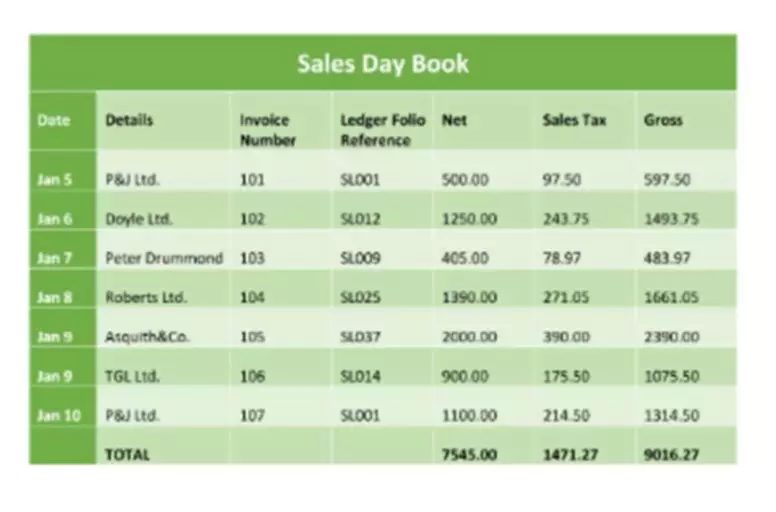Since inventories are recorded as assets for the manufacturers, product costs are recorded on the balance sheet in the assets section under inventories. However, these costs are still paid every period, and so are booked as period costs. To quickly identify if a cost is a period cost or product cost, ask the question, “Is the cost directly or indirectly related to the production of products? “Period costs” or “period expenses” are costs charged to the expense account and are not linked to production or inventory. Costs and expenses that are capitalized, related to fixed assets, related to purchase of goods, or any other capitalized interest are not period costs. The product costs are the costs incurred by a company directly related to the production of goods.
To rapidly determine whether a cost is a period cost or a product cost, ask yourself, “Is the expense directly or indirectly tied to the manufacturing of products? Product costs are often treated as inventory bench bookkeeping review and are referred to as “inventoriable costs” because these costs are used to value the inventory. When products are sold, the product costs become part of costs of goods sold as shown in the income statement.
For example, a manufacturer may pay $5,000 per month in rent for its factory. The rent expense is recorded on the income statement each month whether 1,000 units or 10,000 units are manufactured. In a manufacturing organization, an important distinction exists between product costs and period costs. Any manufacturer’s expenses can be either categorized as a product cost or a period cost based on whether it can be directly linked to the production process of inventories or not.
- For example, understating product costs decreases COGS and increases net income.
- Product costs can be directly tied to the manufacturing process of inventories.
- Advertising, market research, sales salaries and commissions, and delivery and storage of finished goods are selling costs.
- These costs are only expensed when the inventory is sold, and are recorded as cost of goods sold (COGS) on the income statement.
Understanding how costs flow through the financial statements is an essential concept in managerial accounting and cost analysis. Period costs are basically the expenses which could be charged to income statement of the company for the period in which such expenses have been incurred. These expenses are not directly related to the production of inventory and thus does not form part of the cost of goods sold and are charged in the income statement of the company.
Careful monitoring of period costs is key for businesses to control operating budgets. Period and product costs play different but important roles in financial reporting. In a manufacturing organization, an important difference exists between product costs and period costs.
Sales and marketing costs may be commission for the sales team, salary for the marketing team, advertising costs to boost brand awareness, market research, and product design. Period cost is those which are incurred periodic and are not related to product cost or manufacturing cost. Period costs and product costs are important concepts in managerial accounting that help businesses track https://www.wave-accounting.net/ their expenses. Knowing the key differences between these types of costs can have a big impact on financial reporting and decision making. In summary, period costs like rent and advertising are expensed immediately each accounting period on the income statement. Product costs like materials are included in inventory valuation through cost of goods sold when production occurs.
Get instant access to lessons taught by experienced private equity pros and bulge bracket investment bankers including financial statement modeling, DCF, M&A, LBO, Comps and Excel Modeling. If operations are halted, the firm will not incur enabling costs; nevertheless, if operations are resumed, the firm will incur them. Some will most likely be consistent across the whole output range, while others will likely fluctuate in steps. A single-shift operation, for example, may only require one departmental supervisor, whereas a second shift operation will necessitate the hiring of a second supervisor.
What is your current financial priority?
Product costs are all the costs that are related to producing a good or service. These items are directly traceable or assignable to the product being manufactured. Product costs only become an expense when they are sold and become period costss. The costs that are not classified as product costs are known as period costs. These costs are not part of the manufacturing process and are, therefore, treated as expense for the period in which they arise.
Product costs (direct materials, direct labor and overhead) are not expensed until the item is sold when the product costs are recorded as cost of goods sold. Period costs are selling and administrative expenses, not related to creating a product, that are shown in the income statement in the period in which they are incurred. In managerial and cost accounting, period costs refer to costs that are not tied to or related to the production of inventory. Examples include selling, general and administrative (SG&A) expenses, marketing expenses, CEO salary, and rent expense relating to a corporate office.
Therefore, period costs are listed as an expense in the accounting period in which they occurred. Speaking of financial statements, it’s important that you take the time to review your financial statements on a regular basis. This can be particularly important for small business owners, who have less room for error. If product and period costs are overstated or understated, or not recorded at all, your financial statements will be wrong as well. As a non-cash expense, depreciation appears on the income statement but does not directly drain cash flow. While variable costs like materials rise and fall with production volume, fixed expenses like depreciation, rent, insurance, etc. remain unchanged from month to month.
Instead, they are included in the cost basis of inventory through cost of goods sold as production occurs. The key difference is product costs can be traced to specific units produced, while period costs cannot. The period costs could not be capitalized since they are not directly tied to the manufacture of inventory and are thus charged in the company’s profit and loss statement. Better management of period costs assists the business in identifying expenses and areas of expenses where the same or better services and results might be obtained with less expenditure to the organization.
Recap of Period Costs vs Product Costs
Period costs, also known as period expenses, are costs that cannot be capitalized on a company’s balance sheet. They are expensed in the period they are incurred and appear on the income statement. Period costs are not related to the production of inventory and include expenses such as selling, general and administrative (SG&A) expenses, marketing expenses, CEO salary, and rent expense for corporate offices. They are recorded differently from product costs, which are costs directly tied to the production of a product. Examples of period costs include rent for corporate offices, marketing campaigns, and salaries for accountants. These costs are expensed in the period incurred and reduce net income on the income statement.
HowePeriod cost is those which are incurred periodically and are not related to product cost or manufacturing cost. But either criterion that periodic expenses are not fulfilled by Loss on sale of the asset since that incur only once and the second one is prepaid rent, which from the name it states that it has paid before time. Because period costs immediately impact net income, managing them helps businesses increase profitability. Examples include administrative salaries, marketing, research and development (R&D), etc. Alternatively, the costs of wood, fabric, nails and other materials that physically go into building a chair are product costs.
Swap Contracts: Finance Explained
Production costs are usually part of the variable costs of business because the amount spent will vary in proportion to the amount produced. Both of these costs are considered period costs because selling and administrative expenses are used up over the same period in which they originate. Weighted-average costing combines current-period expenses with prior-period costs in the beginning inventory. Managers are unable to determine the current period expense of manufacturing the product as a result of this combination. This issue is addressed by first-in, first-out (FIFO) costing, which assumes that the first units worked on are the first units moved out of a production department. Period costs are not assigned to one particular product or the cost of inventory like product costs.
In other words, they are expensed in the period incurred and appear on the income statement. This way the management could identify the expenses that could be classified as period costs and it will become easy to evaluate and compare the same figure with the figure in the previous years. Most period costs are considered periodic fixed expenses, although in some instances, they can be semi-variable expenses. For example, you receive a utility bill each month that is not directly tied to production levels, but the amount can vary from month to month, making it a semi-variable expense. Whether the calculation is for forecasting or reporting affects the appropriate methodology as well.
Period Costs vs. Product Costs: What’s the Difference?
They are also included in determining the amount of revenue that has been earned when an asset is sold, which in turn can affect both revenues and costs in future accounting periods. Unlike period expenses, operating expenses often cannot be easily identified by when payments are received or made during the accounting periods that they affect. Many employees receive fringe benefits paid for by employers, such as payroll taxes, pension costs, and paid vacations. These fringe benefit costs can significantly increase the direct labor hourly wage rate. Other companies include fringe benefit costs in overhead if they can be traced to the product only with great difficulty and effort. For a retailer, the product costs would include the supplies purchased from a supplier and any other costs involved in bringing their goods to market.





